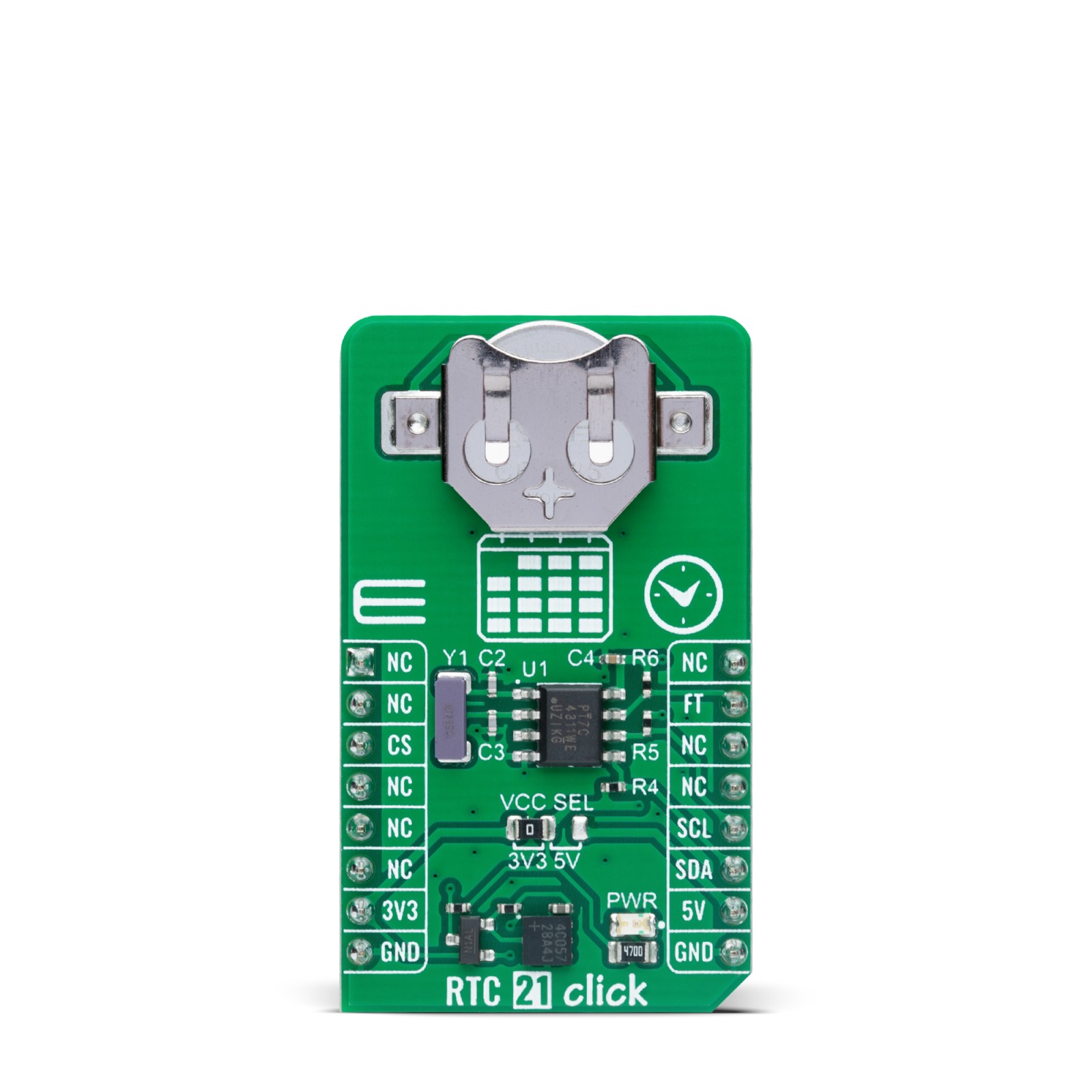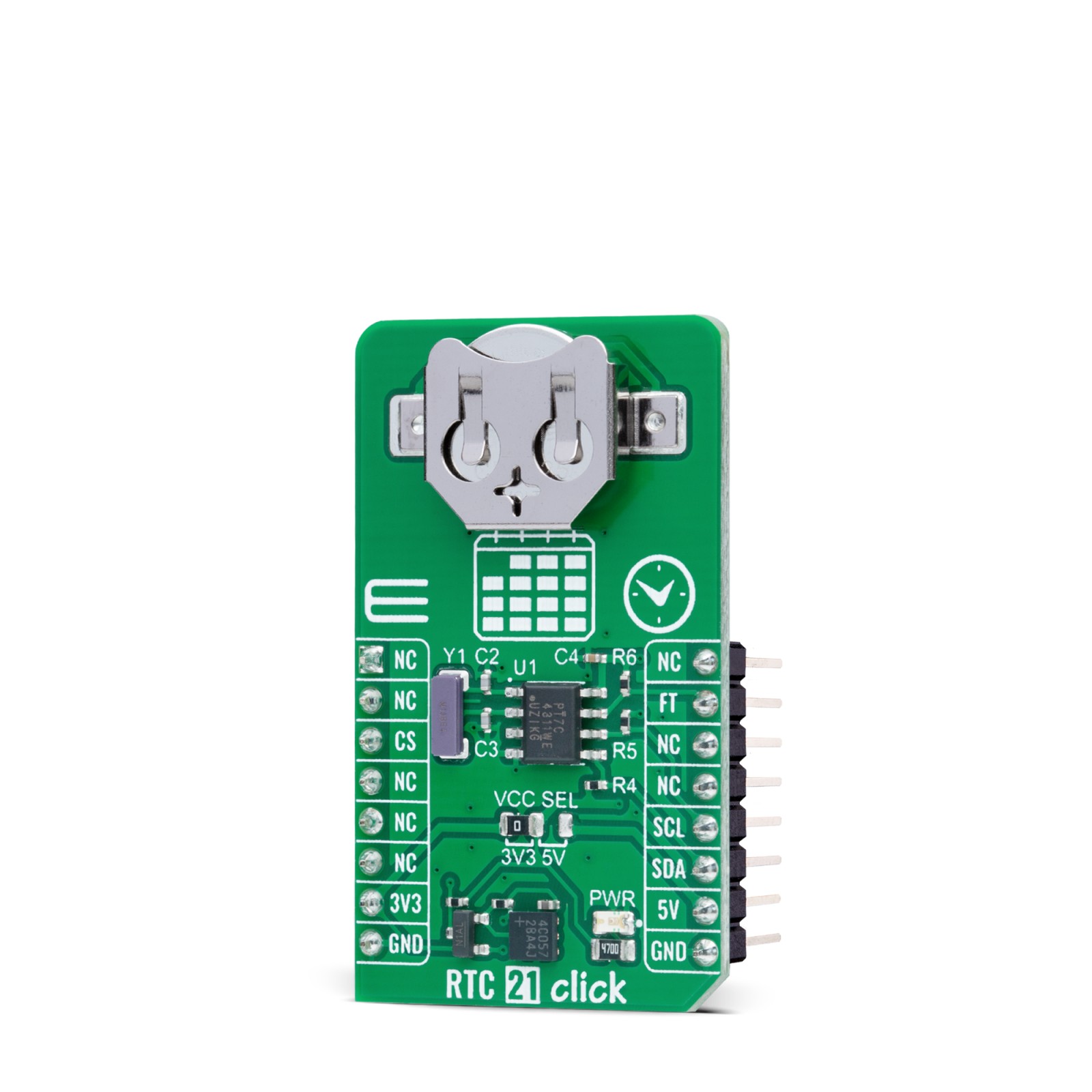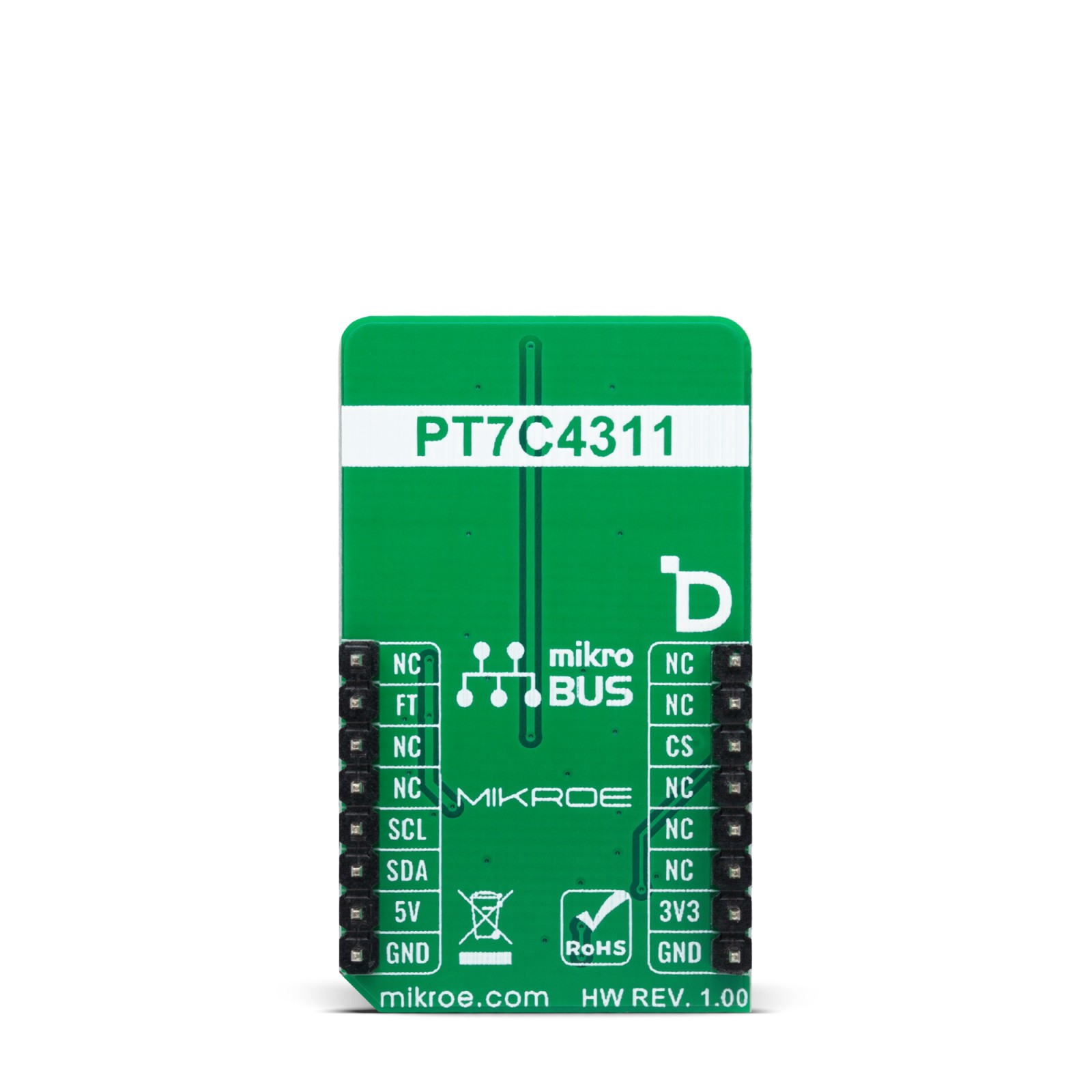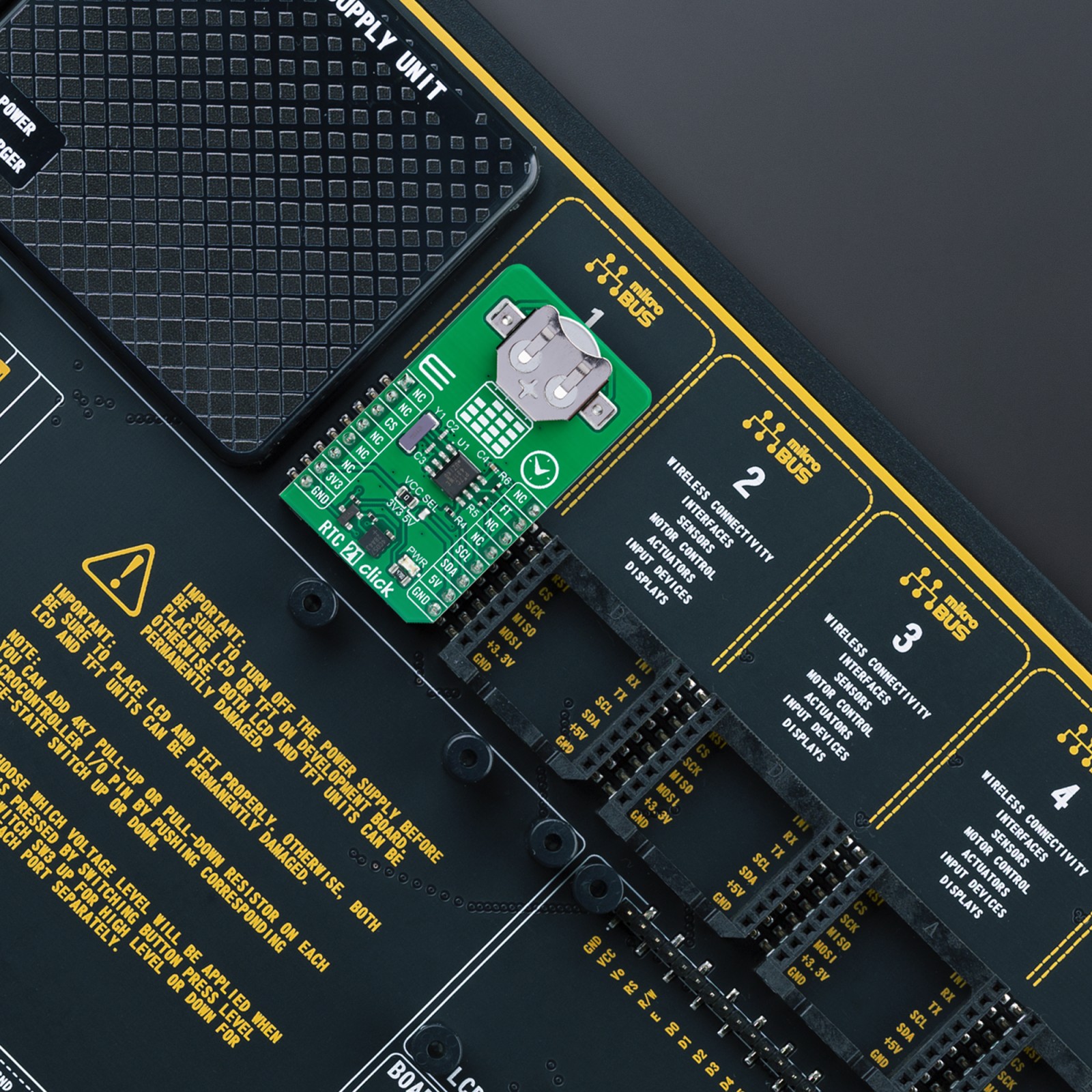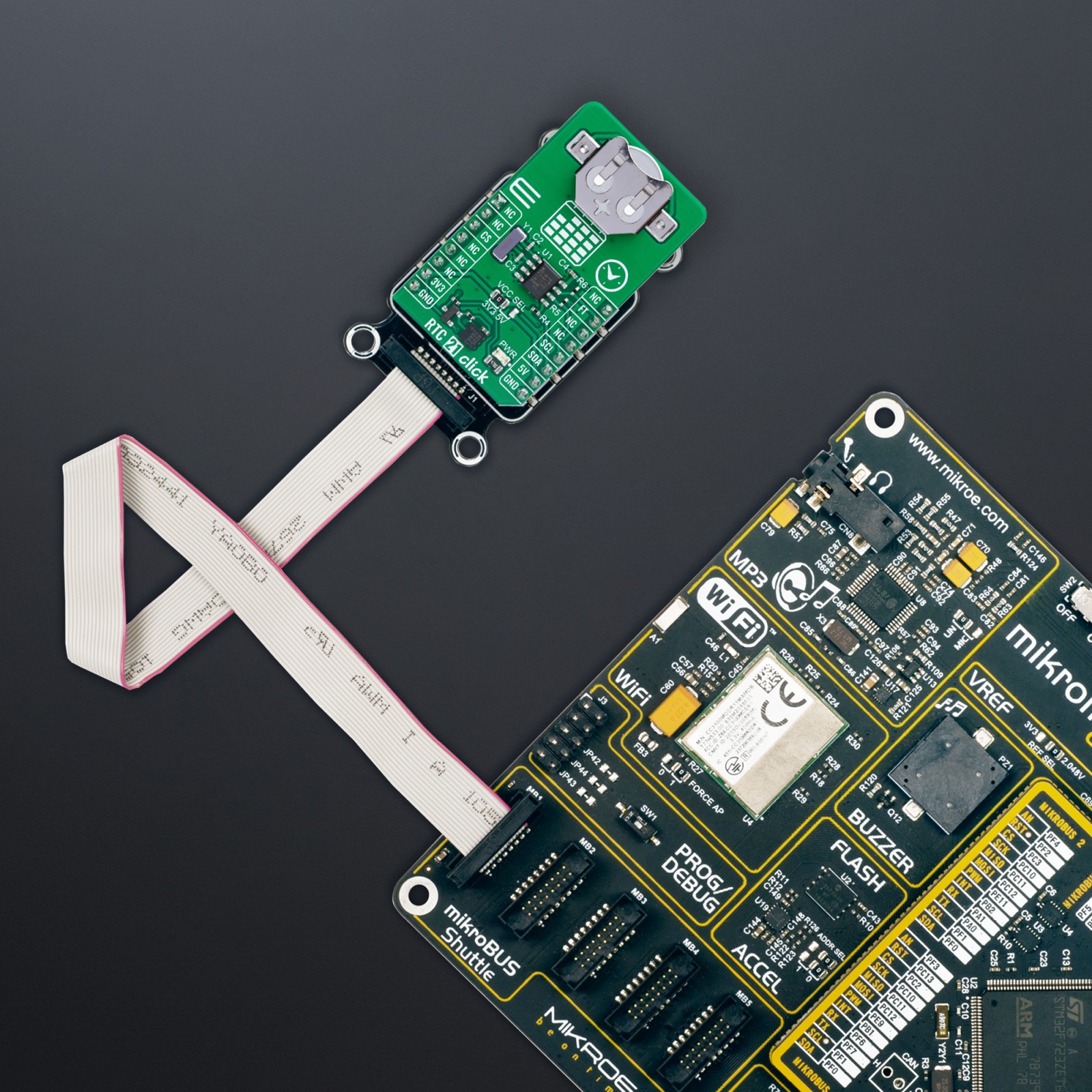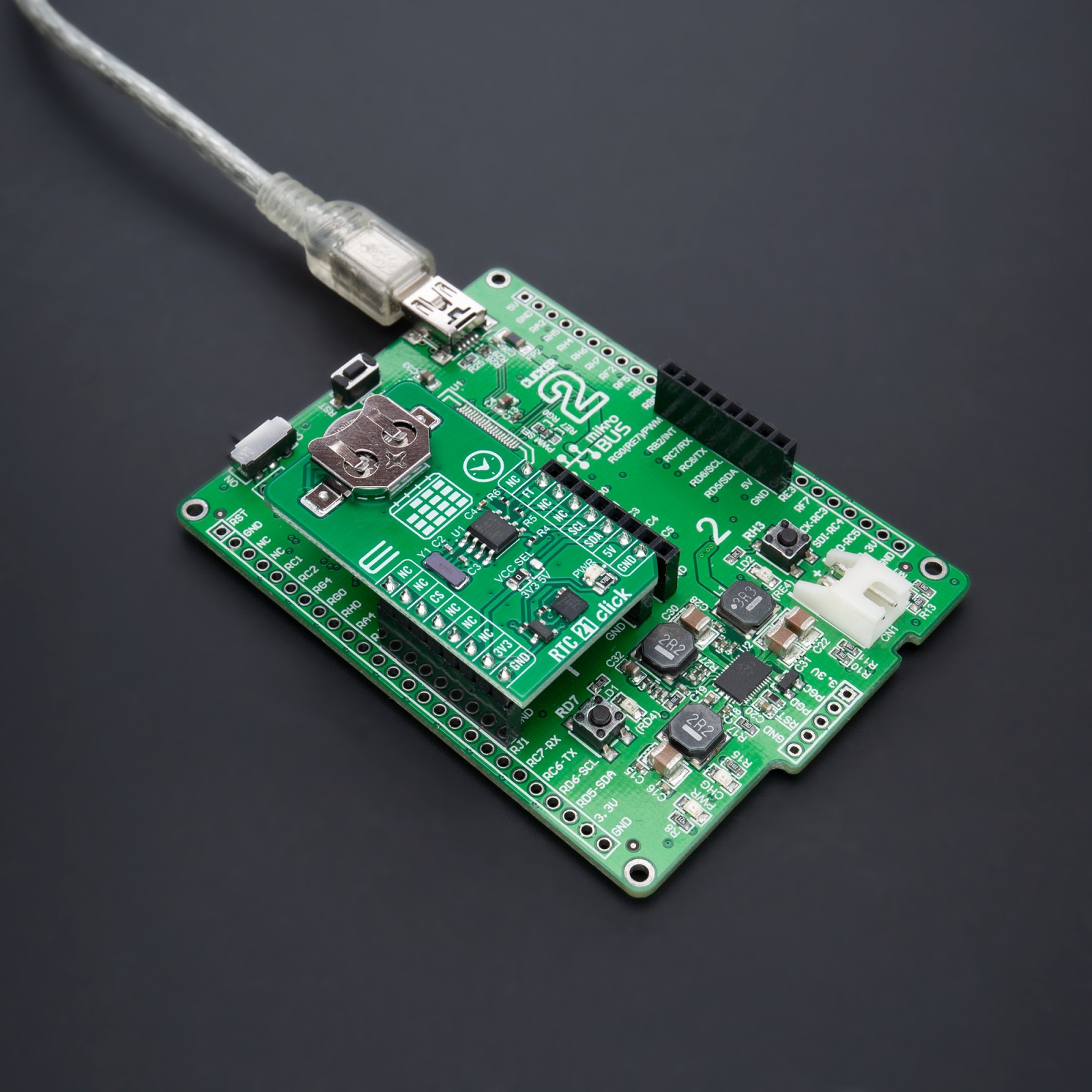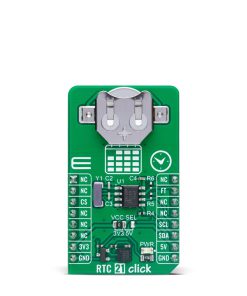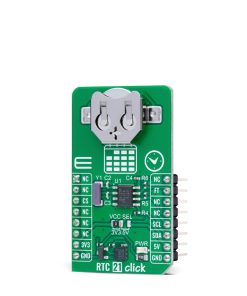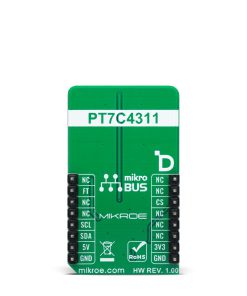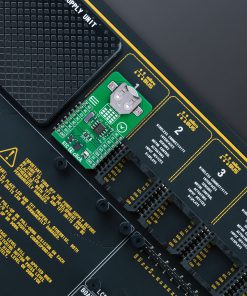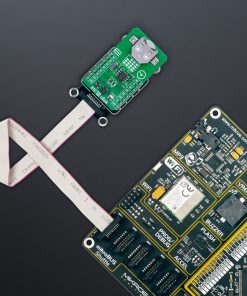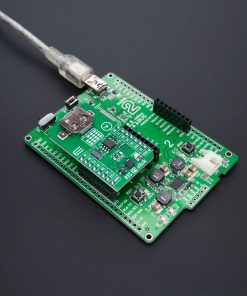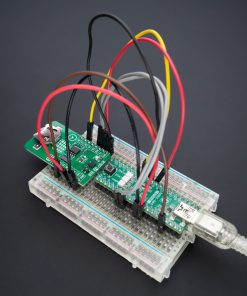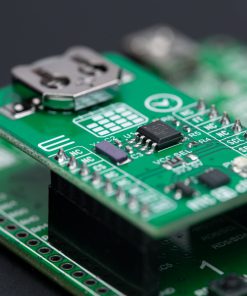Subtotal: R1,640.00
RTC 21 click
R335.00 ex. VAT
RTC 21 Click is a compact add-on board that accurately keeps the time of the day. This board features the PT7C4311, an I2C-configurable real-time clock module with programmable square-wave output from Diodes Incorporated. The PT7C4311 includes time and calendar functions providing various information such as hour, minute, second, day, date, month, year, and century. It operates in a 24-hour format indicator, has automatic leap year compensation, and low power consumption, allowing it to be used with a single button cell battery for an extended period. This Click board™ is suitable for various time-keeping applications, including daily alarms, metering applications, and others requiring an accurate RTC for their operation.
RTC 21 Click is fully compatible with the mikroBUS™ socket and can be used on any host system supporting the mikroBUS™ standard. It comes with the mikroSDK open-source libraries, offering unparalleled flexibility for evaluation and customization. What sets this Click board™ apart is the groundbreaking ClickID feature, enabling your host system to seamlessly and automatically detect and identify this add-on board.
Stock: Lead-time applicable.
| 5+ | R318.25 |
| 10+ | R301.50 |
| 15+ | R284.75 |
| 20+ | R274.03 |

 Accel Click
Accel Click  ccRF2 Click
ccRF2 Click  MP3 Click
MP3 Click 